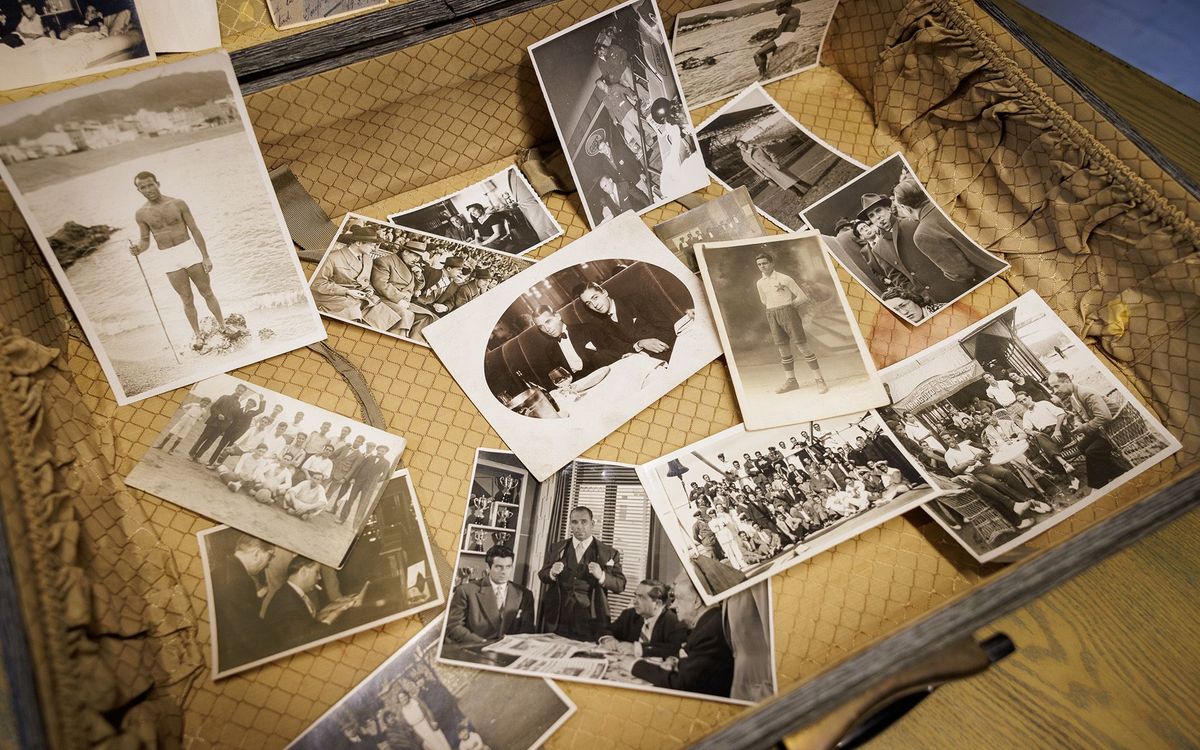FC Barcelona publish material from the Samitier Collection on the 50th anniversary of the blaugrana legend's death
- label.aria.viber Viber
- label.aria.whatsapp WhatsApp
- label.aria.twitter Twitter
- label.aria.facebook Facebook
- label.aria.messenger Messenger
- label.aria.link label.aria.tick Copy link
Wednesday 4 May marks 50 years to the day since the death of Josep Samitier, a blaugrana legend, and to celebrate the occasion the Club has published photographs, many never seen before, from the Josep Samitier Collection managed by the FC Barcelona Documentation and Study Centre. The collection contains some 1,022 personal photos that Josep Samitier collected over his lifetime, both from his sporting career and from his personal life. The photographs came into the Club's possession in a suitcase presented to them in 2002 by Joan Rovira, at the time secretary of the Agrupació d’Antics Jugadors del FC Barcelona, who donated it in the name of Samitier's widow, Valentina Soler.
The Club have published on their website a collection of the photos from the archive, some of which portray Samitier in his playing days whilst other are more personal and family orientated.

© FC Barcelona | Author: Germán Parga
Barça history has a special place for one of the important players in its history. Josep Samitier i Vilalta was the undisputed leader of the side that had so much success in the 1920s, the first 'Golden Age', winning five Spanish Championships and the first ever league title in 1929. Barça had the fortune to boast the presence of Samitier, the most unpredictable and talented striker in Europe - simply put, the best.
Blaugrana debut in 1919
Born in Barcelona, on the street Comte d'Urgell in the centre of the city on 1 February 1902, Samitier played for the Internacional club from the age of 11 to 17 and caught the eye of the FC Barcelona coaches. The Club decided to sign him toward the end of the 1918-19 season and in line with the amateur nature of the times, Samitier received a watch with a luminous face from the Club on arrival. Another arrival at the same time was his great friend Ricard Zamora, who later would be a rival with RCD Espanyol. Both players made their debuts for FC Barcelona on 31 May, 1919 in a friendly between the blaugranes and an XI made up of players from the victorious nations from the First World War.

That was the day that a glorious era began for Barça. The fancy of Sami, with his amazing leaps and his ability to score with both feet and his head, won the affections of the Barça fans and he quickly became a favourite. Soon he earned himself the nicknames of Locust Man and the Wizard due to his playing style. Alongside other legends such as Plattkó, Torralba, Sancho, Gràcia, Vinyals, Sagi, Piera, Alcántara and many others, Samitier was part of a fabulous team that brought about the first football boom, both in Barcelona and in Catalonia. As a direct result, the 6,000 capacity stadium at Carrer Indústria became too small for the team and so a new 22,00 capacity ground was built in Les Corts.
Midfielder to striker
With Samitier leading the side, FC Barcelona won the Catalan Championship in 9-20, 20-21, 21-22, 23-24, 24-25, 25-26, 26-27, 27-28, 29-30, 30-31 and 31-32, the Spanish Championship in 19-20, 21-22, 24-25, 25-26 and 27-28 and the league title in 28-29. Initially a midfielder, from 1923 he transformed into a sensational striker as the figures show: between 1919 and 1932 he played 232 official matches for Barça, scoring 184 goals, making him fifth on the Club's all time list of goalscorers with only Messi, César, Súarez and Kubala ahead of him. His quality led him to the Spanish national side at the age of just 18 for the 1920 Olympics in Antwerp. He went to play 21 times for the national side.
Samitier was an outgoing, cosmopolitan and extrovert character who counted amongst his friends the likes of Salvador Dalí, Maurice Chevalier and Carlos Gardel, the latter in 1928 dedicating a tango to the player. The 1920s in Barcelona buzzed with passion for this extraordinary player, the first real media star in FC Barcelona history.

Vinceç Piera i Josep Samitier. | AFCB - Fons Josep Samitier / Autor desconegut
Vinceç Piera i Josep Samitier. | AFCB - Fons Josep Samitier / Autor desconegut
Unfortunately, due to differences with Barça president Joan Coma, Sami left the Club on 30 December 1932 to sign for Real Madrid where he played until the end of the 1933-34 season. He made a return to Barça on 19 January 1936 for a testimonial game at the stadium in Les Corts. The fans forgave him for his Real Madrid days and during that time he had never renounced his status as an FC Barcelona member.
Exile in France
In 1936, once the Civil War broke out, Samitier took exile in France where played for OGC Nice. Once he had returned home in 1943 he became Barça coach the following year until 1947, winning the league in 44-45 and the Eva Duarte Cup in 1945. From 1947 he was technical secretary at the Club, responsible for such signings as Kubala, Villaverde, Eulogio Martínez, Evaristo and Di Stéfano, although the latter never joined the Club for off the field motives. In 1959, after disagreements with coach Helenio Herrera, Samitier left for Real Madrid once again, this time to act as technical secretary as he had at Barça. Three years later he came back to Barça before passing away in Barcelona on 4 May 1972 while he was still in the post of technical secretary. Years later, on 16 September 1993, thanks to the Fòrum Samitier, one of the streets near Camp Nou was named after him, next to the Les Corts cemetery where he is buried.
- label.aria.viber Viber
- label.aria.whatsapp WhatsApp
- label.aria.twitter Twitter
- label.aria.facebook Facebook
- label.aria.messenger Messenger
- label.aria.link label.aria.tick Copy link

